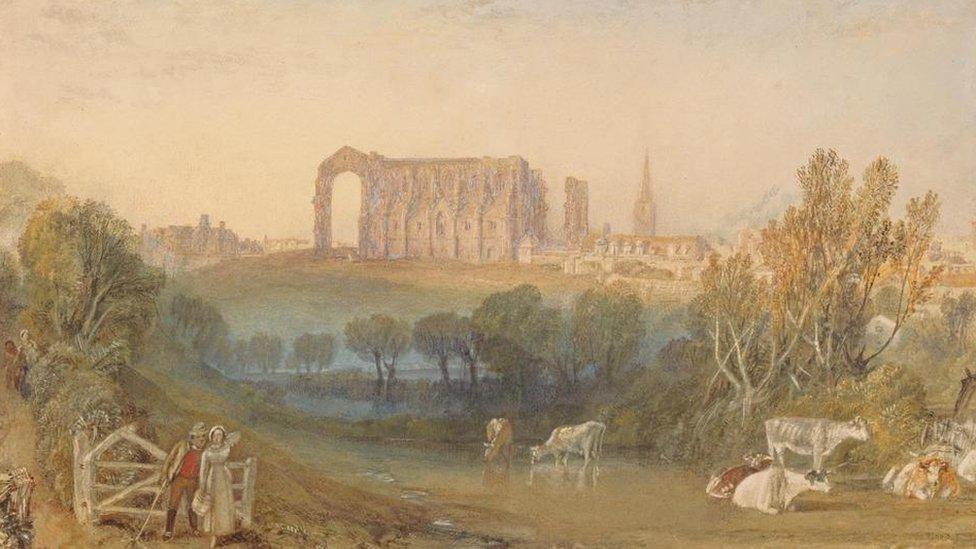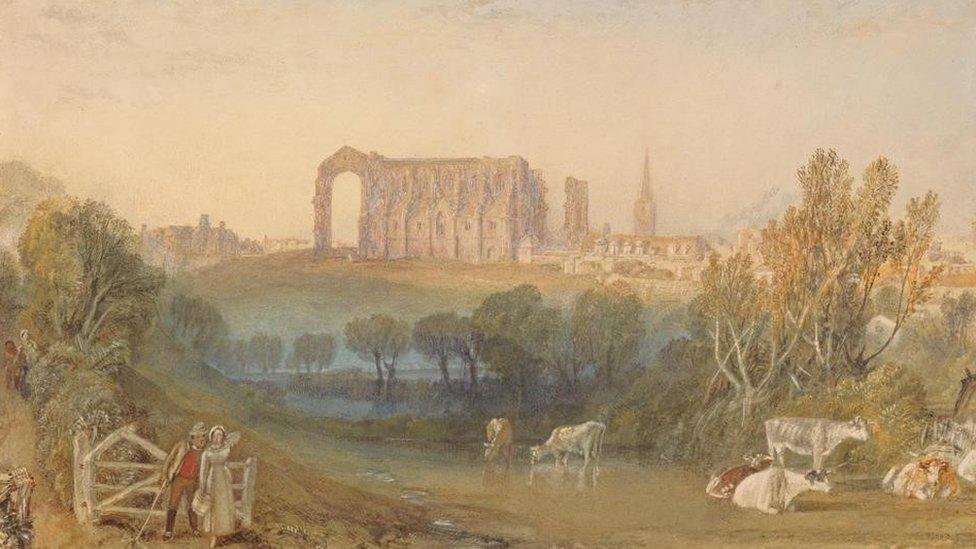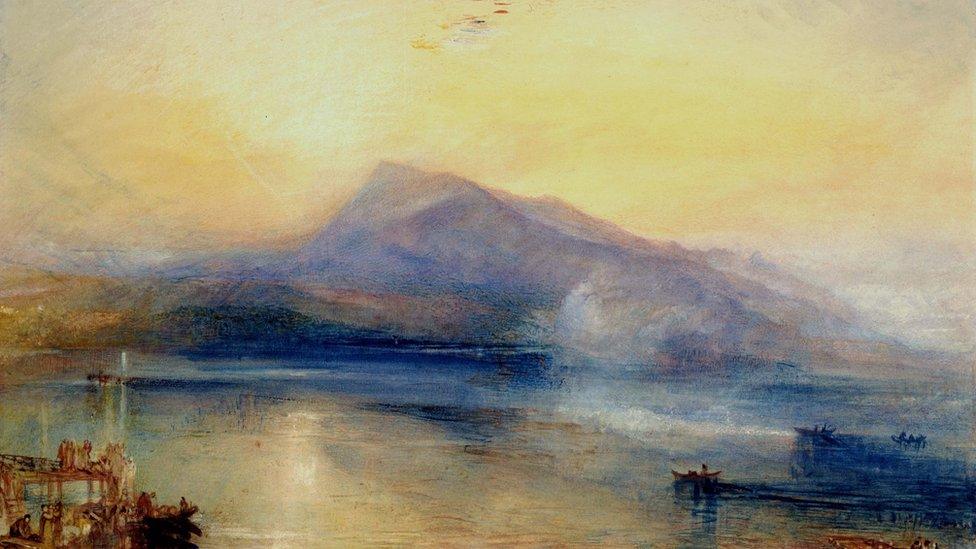JMW Turner painting goes on display for first time since 1833
- Published

JMW Turner, Malmesbury Abbey, Wiltshire, 1827
A Turner painting of Malmesbury Abbey in Wiltshire has gone on public display for the first time in nearly 200 years.
The watercolour is being shown at the town's local museum, as part of a scheme to encourage people back to small museums and heritage sites.
Other objects going on display around the UK include a 160-million-year-old crocodile, a rare Bronze Age sword and the original Jolly Fisherman painting.
The exhibitions have all been supported by the National Lottery Heritage Fund.
It awarded Wiltshire's Athelstan Museum a £380,900 grant to help it buy Turner's painting of Malmesbury Abbey, which had been in private hands for the last 40 years.
Joseph Mallord William Turner was inspired by the 12th-Century abbey ruins on his first visit to Malmesbury in 1791 when he was just 16. He painted the watercolour over his pencil sketch in 1827 when he returned to the area, aged 52.
The painting shows Malmesbury Abbey from the north on a summer morning, the foreground flooded with light and cattle warming themselves in the early sun.
The 3,000-year-old Bronze Age sword will be exhibited at the County Fermanagh museum in Enniskillen Castle.
Featuring a two-edged blade, it was first found near Lough Erne in Enniskillen in 1952 and was in private ownership until a group spotted it in an auction catalogue and got together to bring it back home.
The mysterious Jurassic crocodile will be shown at the Bath Royal's Summer Exhibition.
Considered to be a new and as-yet-undescribed species, it was discovered by Captain McNair, a Victorian railway engineer, during the construction of the Wiltshire, Somerset, and Weymouth Railway; with more detail uncovered by modern laboratory techniques in 2014.
Other objects on display include the famous seaside poster, known as the Jolly Fisherman, by John Hassall, which has been restored through a £4,000 Heritage Fund grant; and an unopened glass time capsule dating back to 1873, which will be shown at the Manchester Jewish Museum.
The red shirt explorer David Livingstone was wearing when he was found by journalist Henry Morton after going missing in Africa will also be on display in his birthplace museum in South Lanarkshire.
The museum reopened on 28 July after a £9.1m regeneration project supported by the Heritage Fund and others.
Chief executive of the Heritage Fund, Ros Kerslake, said: "These are just some of the fascinating heritage objects that people are able to see this summer, thanks to the support of National Lottery players.
"As venues reopen I am pleased that the Heritage Fund has enabled these new discoveries to see the light of day."
Related topics
- Published6 February 2020

- Published3 August 2019

- Published10 March 2021
